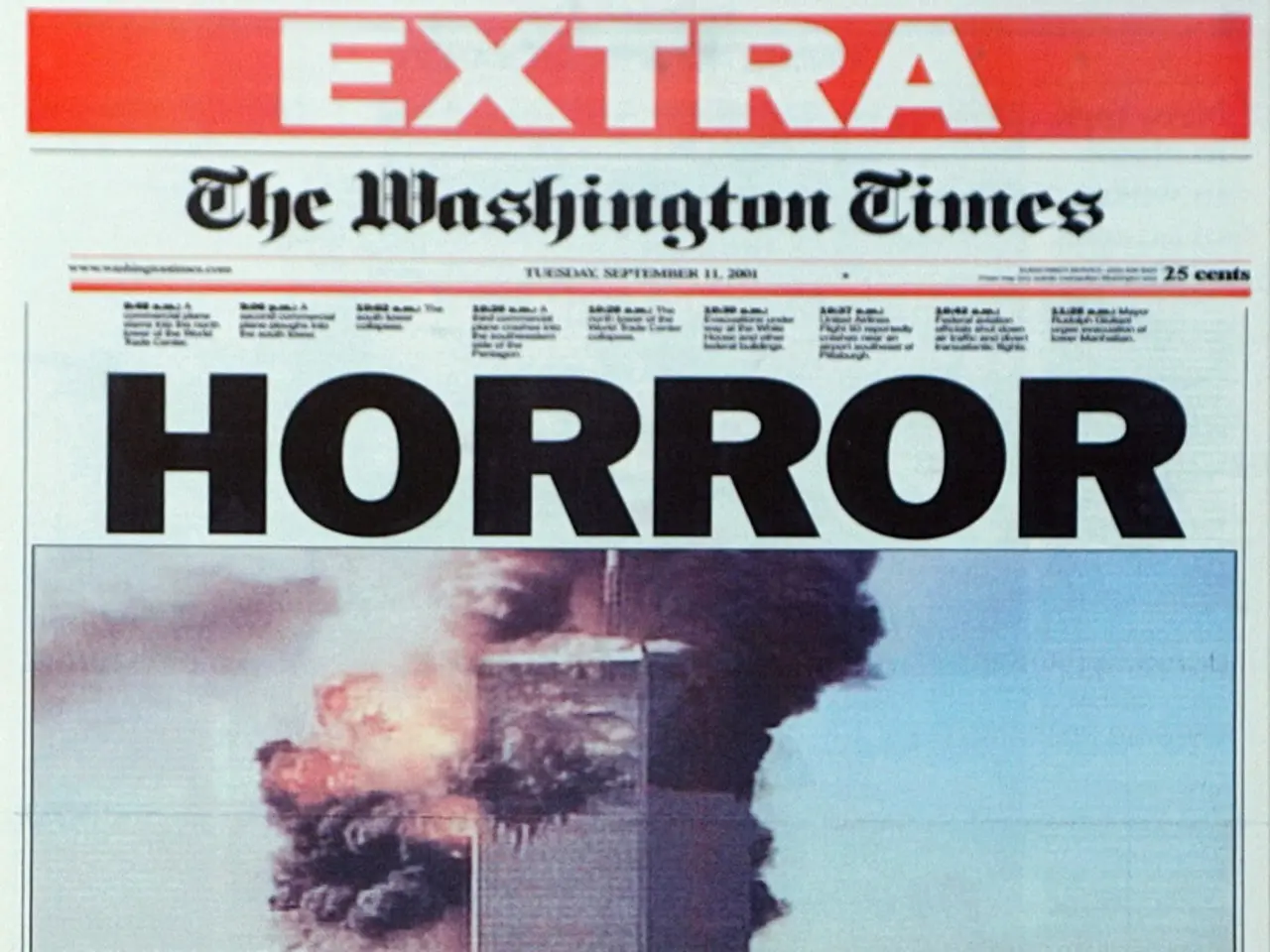United States critics vocalize disapproval over Trump's remarks concerning nuclear-powered submarines.
In a move aimed at demonstrating U.S. military readiness and deterrence against Russian threats, President Donald Trump announced the redeployment of two nuclear submarines closer to Russia [1][2]. The strategic value of this deployment is being widely discussed by military experts, with potential locations including the Mediterranean Sea, Arctic, or the Far East.
The Ohio-class submarines, which carry ballistic missiles and form a critical leg of the U.S. nuclear triad, are believed to be among the vessels being moved [1]. This deployment serves a dual purpose: it increases strategic pressure on Russia by reminding it of the U.S.’s retaliatory capabilities and complicating Russia's calculations about escalation or aggression.
However, the deployment of these submarines is not limited to areas closer to Russia's coast. The possibility of deploying Virginia-class or Los Angeles-class submarines to more tactical and intelligence-gathering roles in other regions also exists, increasing operational flexibility in deterrence and monitoring [1].
The strategic implications of this U.S. move are being closely analysed by both Western and Russian military experts. While the move is seen as a deterrent against Russian provocations, some military correspondents suggest that President Trump's statement about submarines off Russia's coast could be a calculated move designed to create confusion or distraction [1].
This strategic manoeuvre aligns with broader pressure tactics on Russia, including stricter sanctions and ultimatums. However, Trump’s statement also carries a cautionary note about avoiding "unintended consequences," suggesting an awareness of the risks of escalating military tensions inadvertently [1].
The deployment of these submarines represents a strategic deterrence measure aimed at countering Russian provocations, reinforcing U.S. military readiness, and backing diplomatic and economic efforts to pressure Russia regarding Ukraine [1][2]. The move was prompted by a statement by Russian Security Council Deputy Dmitry Medvedev.
It is important to note that the U.S. nuclear triad, which includes bombers, submarines, and land-based missiles, plays a crucial role in the deterrence strategy. The redeployment of the nuclear submarines has created a "commitment trap" in the realm of potential nuclear strikes against Russia.
However, the statement by President Trump has raised false hopes in the Western community, leading some to believe that these submarines are always ready to launch a nuclear missile at targets in Russia. This is not entirely accurate, according to Hans Kristensen, a nuclear programs expert.
In conclusion, the deployment of U.S. nuclear submarines to various locations, including but not limited to Russia's coast, may be part of a broader strategic plan rather than a singular move. The move is a response to Russian provocations and serves to reinforce the U.S.'s commitment to maintaining strategic stability and deterring Russian advances in Ukraine or elsewhere.
[1] [Military Correspondent's Analysis] [2] [Expert Analysis by Hans Kristensen]
- The deployment of U.S. nuclear submarines, such as the Ohio-class and potentially Virginia-class or Los Angeles-class, is not just focused on areas closer to Russia's coast, but also serves to bolster American military readiness and deterrence in regions like the Mediterranean Sea, Arctic, or the Far East, overlapping with general news and politics discussions about war-and-conflicts.
- This strategic redeployment of U.S. nuclear submarines to various locations, in response to Russian provocations, is part of a broader strategic plan aimed at maintaining strategic stability, deterring Russian advances, and countering Russian aggression, making headlines for both Western and Russian military experts in the realm of war-and-conflicts, politics, and general news.







